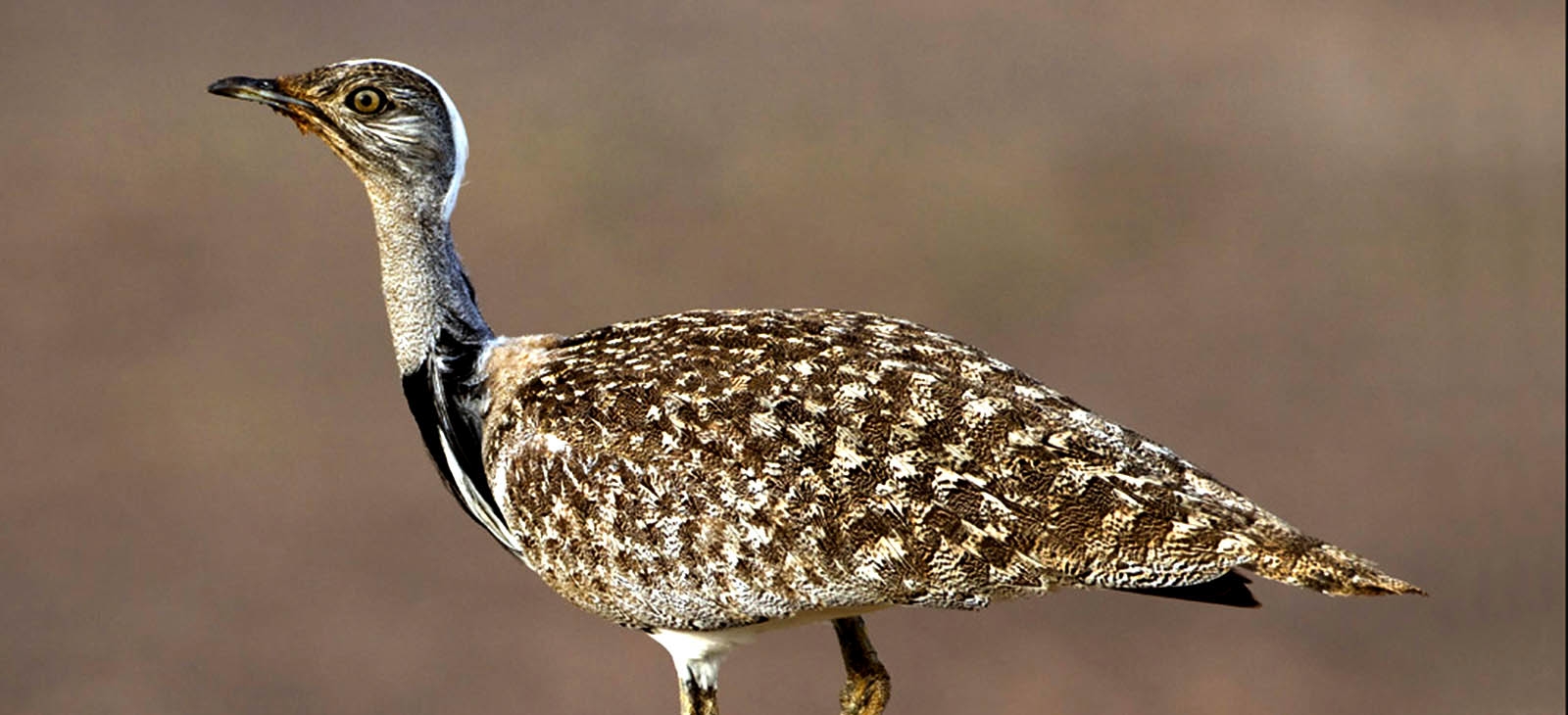The houbara bustard or North African houbara (Chlamydotis undulata) is a large bird in the bustard family. This bustard is found in arid habitats spread across northern Africa with a population on the Canary Islands. They are dull brown with black markings on the wings with a greyish neck and a black ruff along the side of the neck. Males and females appear very similar but males are larger and heavier.
The houbara bustard or North African houbara (Chlamydotis undulata) is a large bird in the bustard family. This bustard is found in arid habitats spread across northern Africa with a population on the Canary Islands. They are dull brown with black markings on the wings with a greyish neck and a black ruff along the side of the neck. Males and females appear very similar but males are larger and heavier. This species formerly included MacQueen's bustard, sometimes known as the Asian houbara as a subspecies.The houbara bustard is a small to mid-sized bustard. It measures 55–65 cm (22–26 in) in length and spans 135–170 cm (53–67 in) across the wings. It is brown above and white below, with a black stripe down the sides of its neck. In flight, the long wings show large areas of black and brown on the flight feathers. It is slightly smaller and darker than MacQueen's bustard. The sexes are similar, but the female, at 66 cm (26 in) tall, is rather smaller and greyer above than the male, at 73 cm (29 in) tall. The body mass is 1.15–2.4 kg (2.5–5.3 lb) in males and 1–1.7 kg (2.2–3.7 lb) in females.
The houbara bustard is found in North Africa west of the Nile mainly in the western part of the Sahara desert region in Mauritania, Morocco, Algeria, Tunisia, Libya and Egypt. Some old records exist from Sudan. A small population is found in the Canary Islands. The Asian houbara or MacQueen's bustard which was earlier included in this species occurs east of the Sinai Peninsula. The north African species is sedentary unlike the northern populations of MacQueen's bustards.
Like other bustards, this species has a flamboyant display raising the white feathers of the head and neck and withdrawing the head. Two to four eggs are laid on the ground. It hardly ever uses its voice.
This species is omnivorous, taking seeds, insects and other small creatures.
Subspecies fuertaventurae of the Canary Islands is highly restricted and endangered. A 1997 survey found a total population of about 500 birds.
The North African houbara bustard declined in populations in the two decades before 2004, but unlike its near relative the Asian houbara or MacQueen's bustard, has been on the increase since. Although hunted both by falconers and by hunters with guns, the extent is much less than that faced by MacQueen's bustard in the middle east and west Asia.
The International Foundation for Conservation and Development of Wildlife (IFCDW) is a major conservation and breeding project established with funds from Prince Sultan Bin Abdul Aziz Al Saud and based near Agadir, Morocco. The centre releases captive bred populations to boost wild populations. Similar projects breed MacQueen's bustards using artificial insemination are also carried out in the United Arab Emirates.

